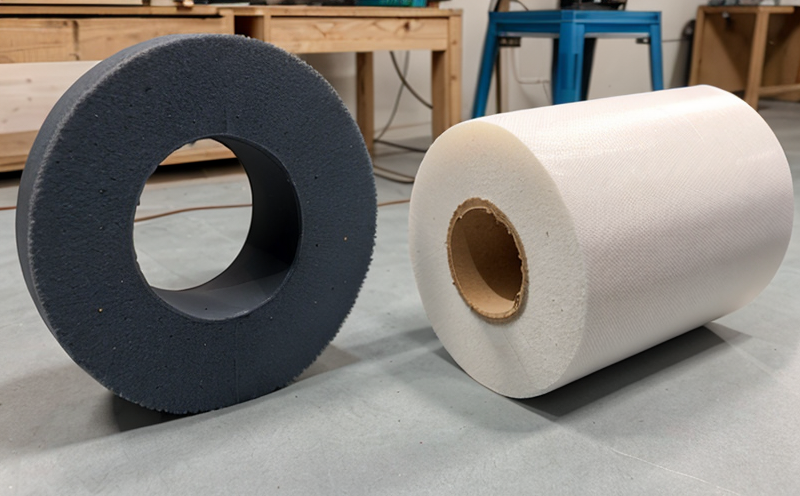ISO 3350 Determination of Static Bending Strength of Wood Testing
The ISO 3350 standard provides a method to determine the static bending strength (also known as modulus of rupture or MOR) of wood and wood-based materials. This test is crucial for quality assurance in the furniture sector, ensuring that the structural integrity and durability of wooden components meet specified standards.
This service involves subjecting specimens cut from solid wood or engineered wood products to a static bending load until failure occurs. The primary focus is on the determination of the maximum stress developed within the material before it yields or breaks under the applied force. This test helps manufacturers, quality control personnel, and regulatory bodies ensure that furniture components are robust enough to withstand everyday use and environmental conditions.
The process begins with selecting appropriate specimens according to ISO 3350 guidelines. These specimens should be representative of the material being tested, considering factors such as grain orientation, moisture content, and dimensions. Specimens are then carefully prepared, ensuring they are free from defects that could affect test results.
Once prepared, the specimens are clamped into a testing machine designed to apply uniform bending stress across their width. The machine measures both the load applied and the corresponding deflection at specific points along the specimen length. The point where failure occurs is noted, allowing calculation of the static bending strength using standard formulas provided in ISO 3350.
Accuracy in test procedures is paramount to ensure reliable results. Factors such as environmental conditions (temperature and humidity), operator expertise, and machine calibration all play critical roles in achieving consistent outcomes. Compliance with international standards like ISO ensures that comparisons between different laboratories are valid and meaningful.
The outcome of this testing provides valuable data for quality managers and compliance officers responsible for maintaining product integrity throughout the supply chain. For R&D engineers, it offers insights into material performance under stress, aiding in material selection and design optimization. Procurement teams benefit from knowing that suppliers meet stringent quality criteria before finalizing contracts.
Understanding the limitations of this test is also important. While ISO 3350 provides a reliable method for determining static bending strength, it does not account for dynamic loading conditions or long-term durability under real-world usage scenarios. Therefore, additional testing may be necessary depending on specific product requirements and market demands.
For furniture manufacturers, this test ensures that each component contributes to the overall structural integrity of end products like chairs, tables, and beds. By adhering to ISO 3350 standards, companies can build trust with customers who value high-quality, durable furniture.
Benefits
Conducting ISO 3350 testing offers several key benefits:
Ensures compliance with industry regulations and customer expectations.
Improves product quality by identifying weak materials early in the production process.
Saves costs associated with rework or replacement of defective components.
Enhances reputation among consumers who value sustainable, high-quality furniture.
Facilitates better communication between suppliers and manufacturers regarding product specifications.
Aids in continuous improvement through iterative testing and feedback loops.
These benefits collectively contribute to a more efficient manufacturing process and ultimately lead to higher customer satisfaction levels.
Industry Applications
Furniture manufacturing: Ensures that wooden components meet durability standards.
Interior design firms: Provides data for selecting appropriate wood types based on strength requirements.
Sustainable forestry projects: Helps in evaluating the performance of different tree species used in furniture production.
Regulatory bodies: Ensures compliance with international safety standards for wooden products.
Research institutions: Supports studies on material properties and their influence on structural integrity.
These applications underscore the importance of ISO 3350 testing in various sectors related to wood-based materials.
International Acceptance and Recognition
The ISO 3350 standard has gained widespread acceptance across many countries due to its rigorous methodology and consistent results. Countries like the United States, Canada, Europe, and Asia have incorporated this test into their national standards and regulations.
Incorporating ISO 3350 into internal quality control processes ensures that furniture manufacturers meet international benchmarks for product safety and quality. This recognition enhances global market access by meeting stringent regulatory requirements in diverse geographical regions.





